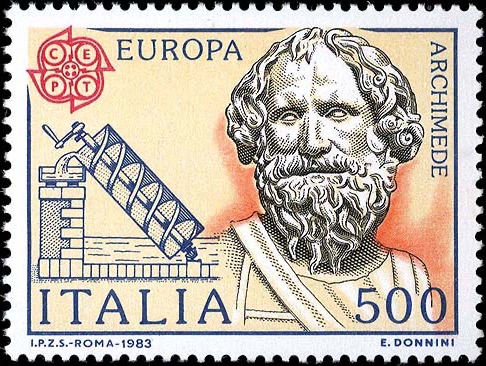
Archimedes (c. 287-c. 212 BC) was a Greek mathematician, physicist, engineer, astronomer, and inventor from the ancient city of Syracuse in Sicily. Although few details of his life are known, he is regarded as one of the leading scientists in classical antiquity. Considered the greatest mathematician of ancient history, and one of the greatest of all time, Archimedes anticipated modern calculus and analysis to derive and rigorously prove a range of geometrical theorems.
Here is a famous anecdote about Archimedes, the scientist:
Once, the king of the land wanted to wear a golden crown. He gave some gold to a goldsmith to make a suitable crown.
After a few days, the goldsmith brought the finished crown to the king. The crown was weighed. The weight of the crown was equal to the gold given to the goldsmith. The king looked at the colour of the crown. He had a suspicion. The goldsmith could have stolen some gold from the gold given to him. The king wanted to find out the truth. He asked his court scientist Archimedes to find out. The king said, “Find out how much gold had been stolen?”
How to find out the truth? Archimedes thought about the problem day and night. One day he was about to have his bath, but he was busy thinking. He did not notice that the water in the bathtub was full to the brim. He slid into the bathtub. Immediately a large quantity of water flowed over the brim of the bath tub. He noticed this and had a brain wave. He jumped out of the bathtub, shouting, “Eureka! Eureka!” Eureka in Greek means “I have found it.”
Different metals of the same weight have different volumes. Objects put in water will displace water. The displaced water will be equal to their volume.
For example, an iron cube weighing a kilogram will disperse some water. But an aluminum cube of the same weight will displace more water than the iron cube.
Using this theory, Archimedes worked out a plan to find out the purity of the gold in the crown.
He took two bowls and filled them with water to the brim. Then he placed each bowl separately in the middle of large vessels. He placed the crown in one bowl. Water overflowed and collected at the bottom of the outer vessel. Then he took a cube of pure gold equal in weight to that of the crown. He kept this gold cube in the middle of the second bowl. Here also water overflowed and got collected at the bottom of the outer bowl.
Archimedes then measured the quantity of water in the two vessels. He found out the difference in the water overflow. The crown had displaced more water. The cube of gold displaced less water. But both the crown and the gold cube were of the same weight. So, they should have displaced the same quantity of water. Therefore, the crown had other metals mixed in it. These metals took up more space in the water than pure gold.
Archimedes reported this finding to the king. The king demanded the truth from the goldsmith. The goldsmith confessed that had stolen some gold and added some other metals.
www.english-for-students.com
The Archimedes principle is used in the design of big ships and submarines. The same principle holds good in the working of hot-air balloons and lactometer
Image of Italian postage stamp (1983) on Archimedes courtesy https://math.nyu.edu/
